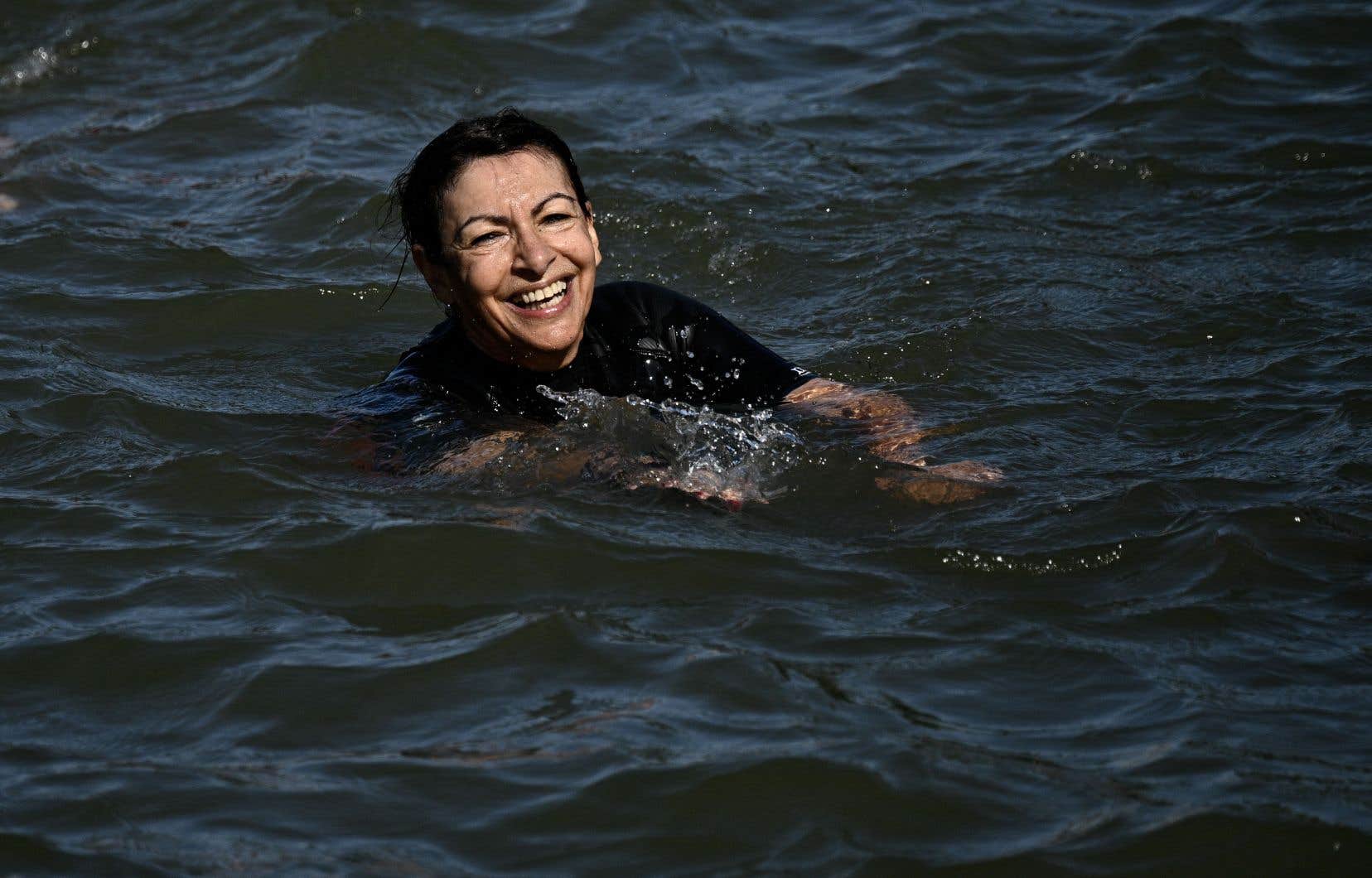Paris Mayor Anne Hidalgo kept her promise and went for a swim in the Seine on Wednesday with the president of the organizing committee, Tony Estanguet, a historic and reassuring swim nine days before the Olympic Games.
Bright sunshine, water at 20°C, bacteria and a drop in flow rate, the planets aligned for this historic swim by key figures from the Olympic Games.
A stone’s throw from Paris City Hall, where the Marie branch of the Parisian river describes a curve between the right bank and the Île Saint-Louis, the mayor of the host city, the president of the games’ organizing committee (a former Olympic canoe medalist) and the prefect of the Paris region (representing the State) Marc Guillaume, dove into the opaque green water in the middle of the morning.
Anne Hidalgo, in a ponytail and a short black jumpsuit, and Tony Estanguet, in shorts, crawled a hundred meters, a symbolic act more than a hundred years after a decree in 1923 banned swimming in the river.
The water was “very soft and quite clear, cool but not cold at all. It was very pleasant,” commented M.me Hidalgo.
Diving after municipal officials and invited swimmers, an AFP journalist experienced water without visible waste, opaque but pleasant, with a strong current, between the centuries-old quays and bridges of old Paris.
Although from the outside this race for image may seem funny, the subject is crucial for the organisers of the Olympic Games, who have made the river the star of these Games, and its decontamination one of the pillars of their candidacy.
It’s a “dream day,” M.me Hidalgo after swimming for a few minutes, “the promise was kept.” “It’s a lot of work, there was a technical dimension, the infrastructures to connect, all the boats… and we did it.”
For Tony Estanguet, “it is a very important message that was sent today to all the athletes who will arrive in a few days”: “That’s it, the Seine is swimmable and indeed the triathlon and marathon swimming competitions will be able to take place.”
For the president of the Organising Committee, this bath is “also symbolic of the ambition of Paris 2024 to be both spectacular Games but also responsible, useful Games, which will leave a legacy”.
“We know about slightly polluted waters because almost everywhere we swim, we have this problem,” commented Dorian Coninx, 2023 triathlon world champion, via videoconference, who emphasizes that in the event of a problem, “there is also a contingency day planned to postpone the race.”
The moment of truth
The State and local authorities of the Paris region have injected 1.4 billion euros since 2016 to make the Seine and its main tributary, the Marne, swimmable.
Modernization of sewage treatment plants, connection of barges to the sewer system, collection of plastic waste… The plan also gave rise to five major works, including a rainwater and wastewater retention basin near the Gare d’Austerlitz, a veritable underground cathedral dug in the heart of Paris.
These works “will make it possible to reduce the period during which it is impossible to hold the tests in the Seine to less than two days after the last rain,” the prefecture stated in March.
The moment of truth is approaching for the organizers: after the opening ceremony, the triathlon events (July 30 and 31, August 5), marathon swimming (August 8 and 9) and paratriathlon (August 1er and September 2) are to be held in the Seine.
However, in August 2023, rehearsals for these disciplines turned into a nightmare for the organizers, who were forced to cancel several days of test events due to water that was unsuitable for swimming.
In the event of heavy rainfall, untreated water may be discharged into the river, a phenomenon that the retention structures inaugurated just before the Games are intended to prevent.
Plan B consists of postponing the events by a few days, while Plan C aims to move the marathon swimming to Vaires-sur-Marne, a small town about twenty kilometers east of Paris.
Latest positive results
Over the last two weeks, despite the Seine’s flow rate remaining as high as ever (around 400 m3 / second Tuesday), which works against the quality of the water, the town hall and the regional prefecture announced generally positive bacteriological results, after several rounds of poor analyses in June due to the rain.
According to the last two samples taken on June 26 and July 4 by the NGO Surfrider on the Olympic course, the content of E. Coli and enterococci, the two fecal bacteria measured to authorize or not swimming, was in accordance with the standards of the international federations of the sports concerned.
“The water is currently safe for swimming,” Marc Valmassoni, water and health coordinator at Surfrider, told AFP, although he regretted that the chemical content was not taken into account by the authorities.
